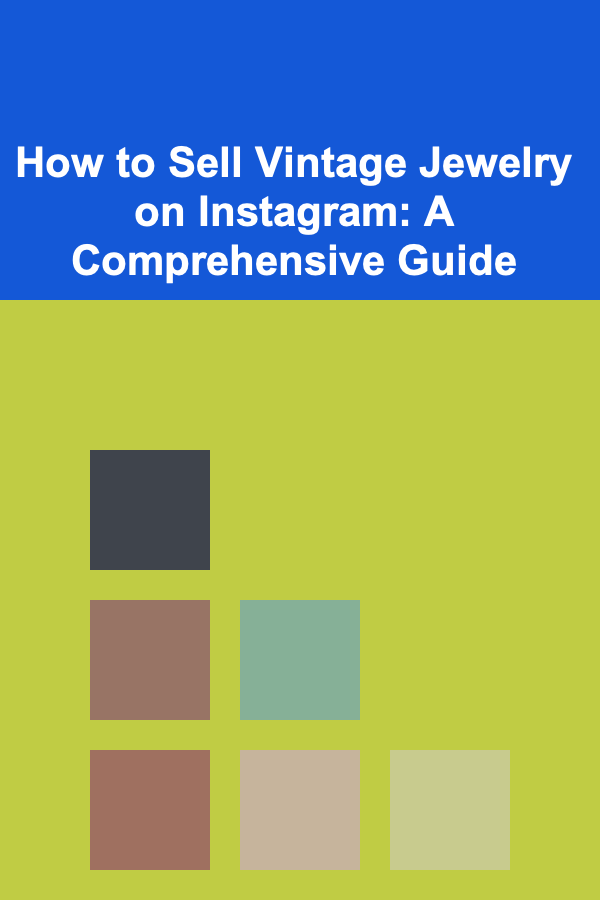
One-Page Website Content Strategy: How to Keep It Simple Yet Effective
ebook include PDF & Audio bundle (Micro Guide)
$12.99$8.99
Limited Time Offer! Order within the next:

In the world of web design, simplicity is often considered the ultimate sophistication. Nowhere is this more apparent than in the design of one-page websites. A one-page website consolidates all the content of a traditional multi-page site into a single, easily navigable page. While this might sound limiting, the simplicity of a one-page website can actually enhance its effectiveness---if the content is carefully crafted with strategy in mind.
A one-page website, by definition, forces you to strip away the unnecessary and focus only on what's essential. This constraint, however, is precisely what gives one-page websites their power. With the right content strategy, a one-page website can deliver a strong message, engage visitors, and drive conversions, all without overwhelming the user.
In this article, we'll explore how to craft a successful one-page website content strategy that keeps things simple but powerful. We'll examine how to structure content, create compelling messaging, prioritize user engagement, and ensure that the website drives your desired outcomes. By the end of this article, you'll have a thorough understanding of how to create a one-page website that stands out while maintaining an uncluttered and effective approach.
Understanding the One-Page Website
A one-page website is a website with a single page where all of its content is housed. This design approach is typically used for landing pages, personal portfolios, promotional campaigns, and event pages. Despite the constraint of a single page, a well-designed one-page website is capable of effectively communicating the essence of a business, product, or service.
One of the key advantages of a one-page website is its focus on simplicity. There are no multiple pages, no sub-navigation, and no complex user flows to consider. It's a straight path where the user's journey is guided by smooth scrolling or clicking through anchor links that bring them to different sections of the page. The goal is clear---provide just enough information to engage the visitor and prompt them to take action.
Why Simplicity Works
The simplicity of a one-page website design works because it prevents the audience from feeling overwhelmed. Today's internet users are inundated with information, and they have less patience for complicated or slow-loading websites. One-page websites cater to the modern user by keeping the experience streamlined, focused, and easy to follow.
When you strip away unnecessary elements, you are forced to be intentional with the content that remains. Every word, image, video, and call-to-action (CTA) must serve a specific purpose. A one-page website forces you to cut out the fluff and focus on the core message. This level of focus is exactly what users crave---concise, relevant information that is easy to digest.
The Challenge of a One-Page Website
The challenge with a one-page website lies in the need to balance brevity and detail. While it's tempting to keep content to a bare minimum, one-page websites must still provide enough information to guide visitors through a decision-making process. Whether the goal is to sell a product, generate leads, or simply raise awareness, your website's content must deliver the right information at the right time. Too much information can overwhelm visitors, while too little can leave them confused or disinterested.
The Anatomy of a One-Page Website Content Strategy
Crafting an effective content strategy for a one-page website involves several crucial steps, each of which should be carefully considered in relation to the overall goal of the website. To ensure that your one-page website is simple yet effective, the content must follow a logical, structured path that gradually leads visitors toward the desired action.
Let's break down the key components of a one-page website content strategy:
1. Define Your Goals and Audience
Before you even begin to write a single word of content for your one-page website, you need to establish clear goals. What do you want your website to achieve? The most common goals for one-page websites include:
- Lead generation: Encouraging visitors to submit their contact information.
- Product sales: Directly selling a product or service through the website.
- Brand awareness: Introducing your brand to new users and increasing visibility.
- Event promotion: Driving interest and sign-ups for an upcoming event or webinar.
Understanding your goal will guide the tone, messaging, and calls to action on your website. Equally important is knowing your audience. Who are you speaking to, and what do they need from you? Tailor your content to address their pain points, desires, and motivations.
2. Create a Clear and Compelling Value Proposition
Your value proposition is the heart of your website---it's what sets you apart from competitors and explains why visitors should choose you. This statement should be clear, concise, and compelling. Ideally, your value proposition should be the first thing visitors see when they land on your page (often located in the hero section of the site).
A strong value proposition answers a few fundamental questions:
- What problem do you solve?
- What benefits do you offer?
- Why are you the best choice for your audience?
For example, if you're running an online store selling eco-friendly products, your value proposition might read: "Shop sustainable, eco-friendly products that help you reduce your carbon footprint." This value proposition is clear, concise, and speaks directly to the user's desire to make a positive environmental impact.
3. Structure the Page for a Seamless User Journey
On a one-page website, it's essential to structure the content in a logical order that guides the user through a natural flow. This means considering how visitors will navigate from one section to another. The typical structure of a one-page website is as follows:
Hero Section
The hero section is the first thing visitors will see, so it's critical to grab their attention immediately. This section typically includes a strong headline, a subheadline or brief description, and a clear call to action. The messaging here should be in line with your value proposition and should be compelling enough to keep visitors engaged.
Problem and Solution
After the hero section, it's time to dive deeper into the problem your audience faces and the solution you provide. This section should build on your value proposition, explaining the pain points of your audience and how your product or service addresses those challenges. Use simple language and make sure your solution is framed in a way that resonates with your audience.
Features and Benefits
Next, showcase the key features or benefits of your product, service, or offering. This section should help the visitor understand what they get when they engage with your business. Keep it concise---highlight only the most compelling aspects that differentiate you from competitors. Bullet points, icons, or visuals can be useful in making this section easy to skim.
Social Proof
Including testimonials, reviews, or case studies provides valuable social proof that builds trust. Showcasing satisfied customers or well-known partners can be a powerful motivator for visitors who are considering whether to take action. Social proof is essential for credibility and can increase conversions significantly.
Call to Action (CTA)
Your call to action is arguably the most important part of your one-page website. This is where you drive the user to take the desired action, whether that's making a purchase, signing up for a newsletter, or requesting a demo. The CTA should be prominently placed, easy to understand, and irresistible. Consider placing multiple CTAs throughout the page, especially after sections that explain the value of your offering.
Contact Information or Contact Form
Make it easy for visitors to get in touch with you. Include a contact section that either provides an email address or a simple contact form. For certain types of websites (e.g., event pages), you might also include location information, a map, or social media links.
4. Use Visuals to Support the Message
Visual elements play a crucial role in any one-page website, especially because you have limited space and text. Images, videos, icons, and infographics can help break up large blocks of text and make the content more engaging. However, it's important not to overdo it---every visual element should serve a purpose and support your messaging.
Here are a few visual strategies to consider:
- Hero Image or Video: A strong, relevant image or video can make a huge impact in the hero section. It should complement the messaging and evoke an emotional response from the visitor.
- Icons and Illustrations: These can help simplify complex ideas and make your website feel more approachable and fun.
- Product Images or Demonstrations: If you're selling a product, high-quality images or even a product demo video can boost credibility and convince users to take action.
5. Optimize for Conversion
Conversion optimization is crucial to the success of your one-page website. A well-optimized site will encourage visitors to take the action you want them to, whether that's making a purchase, signing up for your newsletter, or contacting you for more information. Here are a few tips to optimize your one-page website for conversions:
- Use clear, action-oriented language: Your CTAs should clearly tell visitors what to do. For example, instead of a vague "Submit," use "Get Started" or "Claim Your Free Trial."
- Limit distractions: One of the benefits of a one-page website is that it minimizes distractions. Avoid placing unnecessary links or elements that could divert visitors from the main goal.
- A/B Testing: Consider testing different versions of your page to see what resonates best with your audience. Small tweaks to the wording, design, or layout can have a significant impact on conversion rates.
6. Mobile-Friendly Design
In today's world, a significant portion of website traffic comes from mobile devices. It's essential that your one-page website is optimized for mobile users. Ensure that all text is legible, buttons are easy to click, and the design is responsive (i.e., adjusts seamlessly to different screen sizes).
Conclusion
Creating a one-page website that is both simple and effective requires careful thought and planning. A successful one-page website effectively communicates its message, guides the visitor toward a clear action, and provides just enough information to convert visitors into customers or leads. By focusing on simplicity, prioritizing user experience, and using compelling messaging, you can create a one-page website that stands out and delivers results. Keep in mind that while simplicity is key, the content must still be purposeful, structured, and optimized for your specific goals. When done correctly, a one-page website can be a powerful tool for engagement and conversion.

How to Create a Paperless Home with Digital Solutions
Read More
How to Create a Zen Space with Minimal Storage
Read More
How to Make a Plan for Paying Off Student Loans
Read More
How to Navigate Evictions While Staying Compliant with the Law
Read More
How to Sell Vintage Jewelry on Instagram: A Comprehensive Guide
Read More
Human Rights: Advocating for Dignity and Freedom for All
Read MoreOther Products

How to Create a Paperless Home with Digital Solutions
Read More
How to Create a Zen Space with Minimal Storage
Read More
How to Make a Plan for Paying Off Student Loans
Read More
How to Navigate Evictions While Staying Compliant with the Law
Read More
How to Sell Vintage Jewelry on Instagram: A Comprehensive Guide
Read More